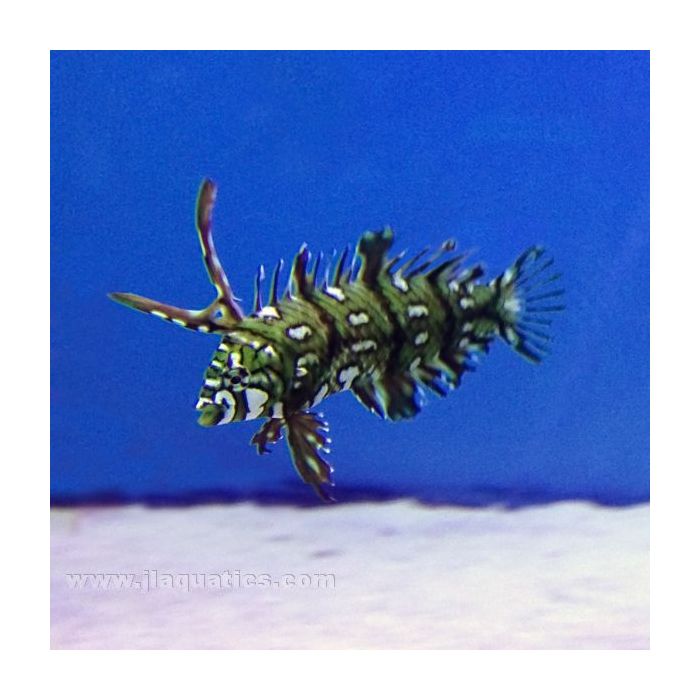Dragon Wrasse (Asia Pacific)
Wrasses are prone to jumping from the aquarium when startled or excited so we recommend a secure lid. They feel most secure when there is plenty of live rock to hide in, as well as open space for swimming. Most species may be kept in pairs or harems as long as they are added together or females first. They do not appreciate living with other species of wrasse, so any aquarium with several species must be large enough and the most peaceful species added first.
They should be fed two to three times a day plenty of high quality meaty items, frozen Mysis shrimp, krill, chopped seafood, marine algae and Spirulina.
These wrasses have active personalities and appreciate plenty of rockwork as well as open space to swim. They may eat small invertebrates, especially shrimp, but do not bother corals or anemones. Due to their relatively shy demeanor they should not be kept with aggressive tank mates. They have very small mouths and may be difficult to feed, so frequent feedings of a wide variety of foods should be offered thorough the day. We only recommend this species for experienced aquarists. They are coral safe, but larger individuals may attack small invertebrates such as shrimp, snails, urchins, worms, bivalves and serpent stars.
br />At night time or when threatened these wrasses will dive into the sand for protection. They can even swim under the sand to avoid predators. It is not uncommon to find the wrasse laying on top of the sand to rest during the day. A fine sand bed of at least 2-3 inches will help them feel secure. Rocks should be placed on the aquarium glass and sand poured around them to eliminate the danger of a cave-in when the wrasse dives in.
The Dragon wrasse is a unique and captivating fish. As a juvenile it is emerald green to earthy shades with dark bands and stark white spots. The first two rays of its dorsal fin are extended into high spikes and held erect above its head, resembling horns. When mature it loses the high rays, but develops attractive stripes extending from its eyes and a wide white band at the base of its tail. Its head is creamy colored and its body is overall dark coffee color with a light spot on each scale. It is also called the Rock Mover wrasse for its habit of flipping rocks in its search for invertebrates to eat. Males and females are identical; a pair may be attempted by adding two juvenile fish at the same time. It grows to 12 inches and needs an aquarium of at least 180 gallons.
Customers who bought this also purchased
 Elegance Coral (Ultra)Out of stock
Elegance Coral (Ultra)Out of stock
















